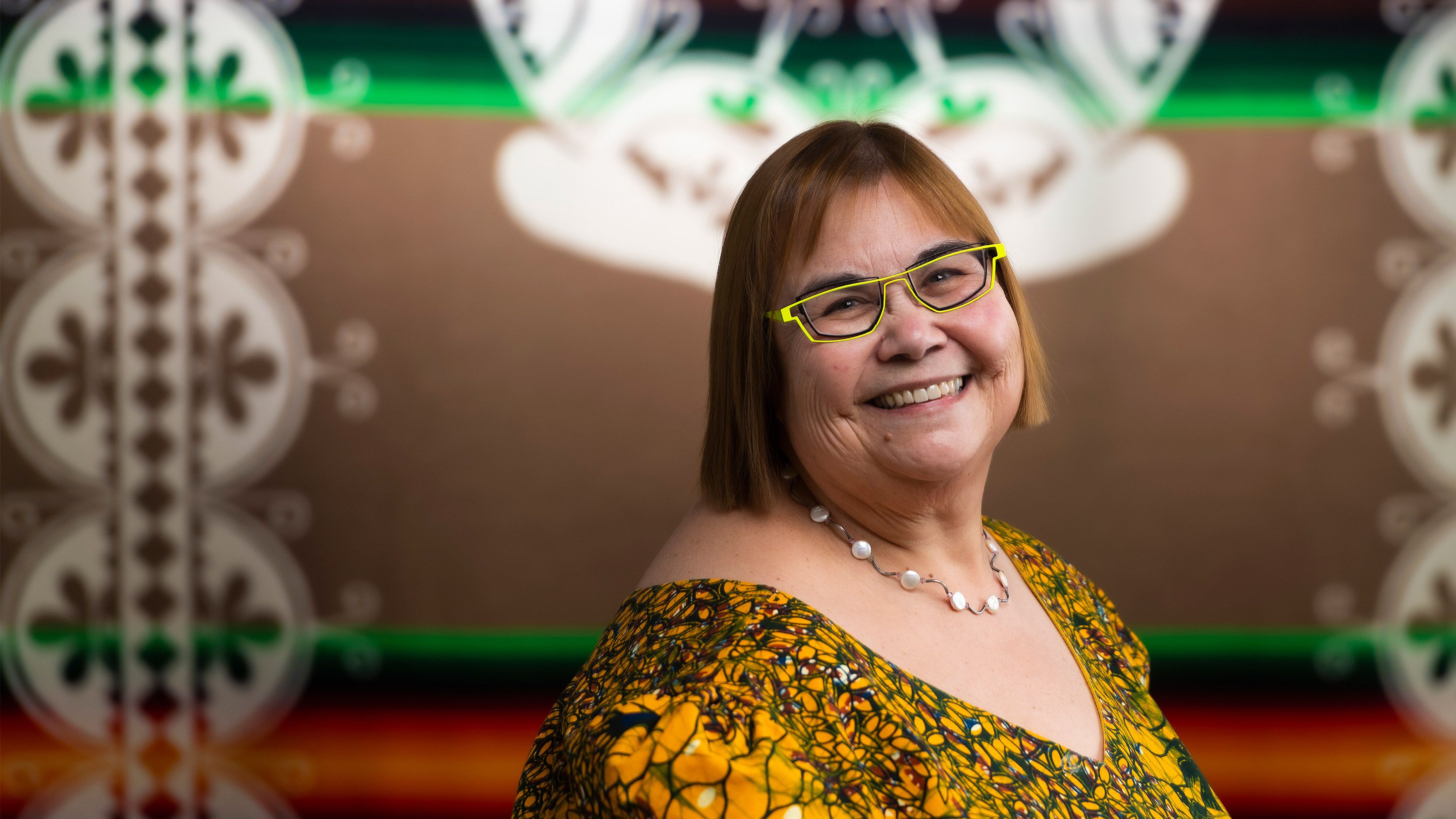The Sweetgrass Teachings tell us that when we plait sweetgrass, we collect 21 strands.
The first seven are the generations that preceded us: they walked the journey to bring us to where we stand today. The second seven strands represent the seven sacred teachings. The third seven strands represent the seven generations yet to come. We, as humans of this Earth, acknowledge our responsibility to those not yet born, knowing that everything we do in our lifetimes carries forward to impact them. In this way, we are bound through time in honouring the legacy of our ancestors and recognizing that we are responsible for the future.
This teaching is at the heart of Braiding Past, Present and Future: University of Alberta Indigenous Strategic Plan. The plan recognizes our collective responsibility to acknowledge our history and to honour those who came before us and to follow the seven sacred teachings — love, respect, honesty, courage, wisdom and humility; to know the first six together is to know truth. The plan also recognizes our responsibilities to the generations to come, knowing that we have the power to leave them a beautiful legacy. In essence: honouring the past, living the present and shaping the future.
I am a member of the Métis Nation of Alberta with deep ties to kin across Alberta. The Lac La Biche-Fort McMurray region was the foundation of my early life. It was from northeastern Alberta that I first came to the University of Alberta to begin my first degree in 1976. The university has played a central role in my life, providing the formal educational experiences behind my career as a teacher, researcher, professor of mathematics education and leader.
It has been a humbling, joyous and a deep responsibility to lead Indigenous-focused work at the University of Alberta since August 2019. A key focus in the first years of the mandate of the Vice-Provost, Indigenous Programming and Research was the creation of an Indigenous Strategic Plan to bring about the kind of foundational change imagined by the Truth and Reconciliation Commission of Canada (TRC) and the broader expectations that have emerged across organizations and the public.
As a society, we are only just coming into a time where the histories and complex understandings of Indigenous Peoples are being heard in the wider world. From the time of contact, Indigenous Peoples have been standing against assimilative practices aimed at causing them to “cease to exist as distinct legal, social, cultural, religious, and racial entities in Canada.” The resurgence of Indigenous Peoples has been carried by those who came before us and the individuals today working to tackle the deliberate aim of the erasure of Indigenous knowledge systems and Peoples.
The confirmation that the remains of Indigenous children have been found at residential school sites across Canada has been a stark reminder of the urgency of the work that the university has committed to in response to the TRC Calls to Action. Long known in community, this is but one piece of the work to correct the historical record and give voice to silenced narratives that significantly impact the lived experiences of Indigenous Peoples.
Education has the power to uplift humanity, and universities have a powerful role and responsibility to play in truth and reconciliation. The University of Alberta’s motto, “Quaecumque Vera,” invites the community to pursue “Whatsoever things are true.” As a university community we should be questioning “whose truth?” and we have a responsibility to teach to question the validity of concepts used to justify European sovereignty over Indigenous lands and Peoples.
Undoing the legacy of colonialism and advancing conciliation — that is establishing respectful nation-to-nation relationships — is a difficult journey. It requires generosity, kindness and patience and, above all, it takes unlearning. We, as individuals and as a collective, are only beginning to take steps to “unlearn colonialism” which means in many ways we are still at the beginning of this complex, generational and ultimately non-linear work.
This plan is another step in this work at the University of Alberta and builds on advocacy that has been taking place for 80-plus years. In the 1940s, University of Alberta professors became members of the Indian Association of Alberta (IAA), learning from several of the most distinguished political and spiritual Elders of Alberta. Known as the Friends of the Indians, the professors lobbied the provincial and federal governments, raised funds and publicized injustices. In the 1960s and ’70s, First Nations and Métis Elders and leaders pushed for research and teacher education programs such as the Morning Star program developed in collaboration with what is now University nuhelot’įne thaiyots’į nistameyimâkanak Blue Quills; this work was the precursor to what we now know as the Aboriginal Teacher Education Program. In the 1970s, an IAA presentation to the University of Alberta Senate led to the development of the School of Native Studies, now the Faculty of Native Studies.
These developments are a small part of the wide-ranging efforts undertaken to build a university that ensures that all students can attain their educational and professional goals and that we all live in a more just world. They are also evidence that the concerted efforts of a few have significant, lasting impacts. The mobilization of the many can be world changing.
I am hopeful as the University of Alberta makes progress on the broad goals contained in the three “strands” of past, present and future articulated in this plan. I invite each of you to find yourself in this plan; I invite you to join the work to play your part in conciliation and to sign the Affirmation for Action at the end of this plan. There is so much more work to be done. This plan is a starting point in a long and critical journey that will take generations to achieve.
Florence Glanfield
Vice-Provost, Indigenous Programming and Research; Professor, Faculty of Education
